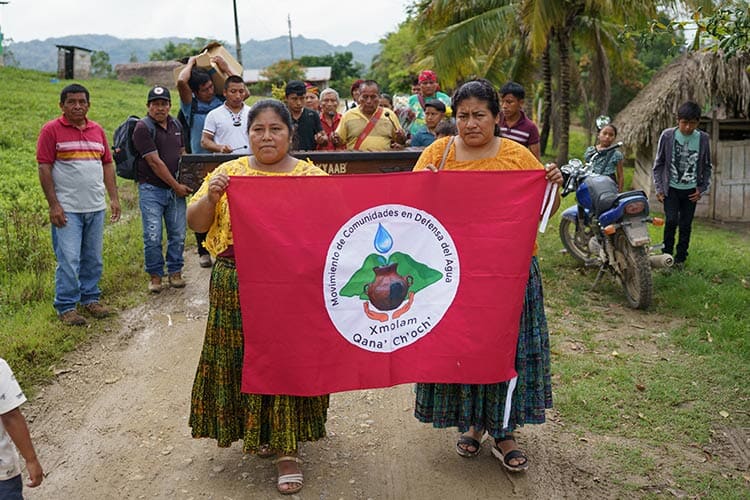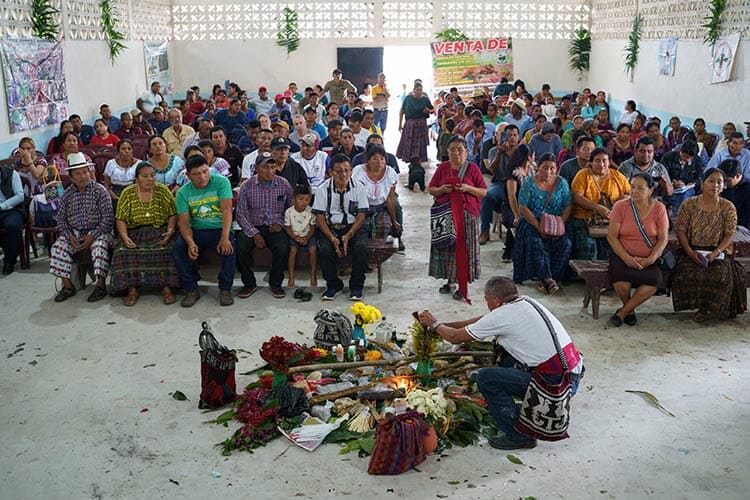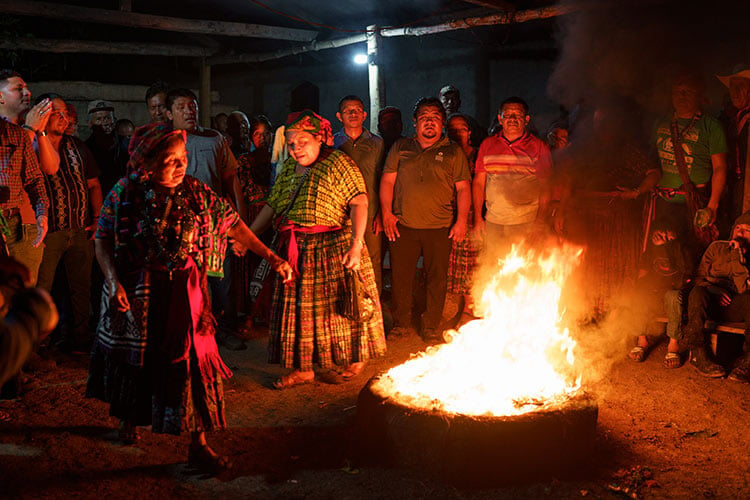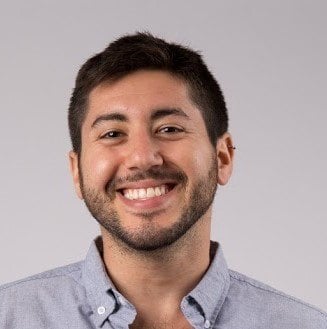It’s an overcast morning in the sleepy Guatemalan farming village of Tzulutlan II, flush against the border with Mexico, but the air is filled with excitement — and it’s not just the calls of local howler monkeys.
Men haul heavy, wooden marimbas out from their homes; women prepare thousands of corn and bean tamales by hand in a large, open-air kitchen; even kids are involved, setting up chairs in the village’s central community center.
They’re all preparing for what’s to come. For the next two days, Tzulutlan II will host Indigenous Guatemalans from around the country to mark the fifth anniversary of Movimiento de Comunidades en Defensa del Agua Qana’ch’och”, or the Movement of Communities in Defense of Water, Mother Earth, an Indigenous grassroots movement supported by AJWS and our grantee partner CONGCOOP (an acronym meaning ‘Coordination of NGOs and Cooperatives’), a national Guatemalan network devoted to accompanying Indigenous communities in their struggles to protect their land and natural resources.
By 11 a.m., the weeks of preparation become reality as a half-dozen buses slowly bump along the dirt road leading to Tzulutlan II, and over 200 people pour out, representing more than 20 communities. Each group wears distinct, traditional clothing — patterns, designs and colors telling the history of their people. What unifies all these people is their struggle: they are all fighting to protect their water sources from industrial pollution. And they know this fight can only be won if they stand together.

Qana’ch’och’ — which means ‘Mother Earth’ in the Indigenous Q’eqchi language — was founded in 2020 by a group of villagers in the northern Alta Verapaz region who saw the rapid degradation of their land and water caused by local palm oil plantations. In Tzulutlan II, for example, Guatemalan palm oil giant Industria Chiquibul opened its massive, sprawling plantation in 2012, dumping industrial waste into the San Roman River; by 2017, fish were dying, children got sick from bathing in the river and the water — a critical source of life for these villagers — was undrinkable. To many Indigenous Guatemalans, the desecration of their ancestral land and water feels like one more blow in a history of abuse, violence and exploitation.
“We’re honoring the fifth anniversary of this movement, but our struggle began years before,” says Santiago Caal, one of Qana’ch’och’s founders, at the gathering’s opening ceremony. “The struggle of Indigenous Peoples traces back generations. We are here to protest the pollution of our sacred rivers, but also to celebrate our solidarity, our history, our culture.”
The movement’s efforts to fight back involve legal action. CONGCOOP and another AJWS grantee, Bufete Para Pueblos Indígenas (Law firm for Indigenous People), helped this movement to file a class-action lawsuit against Chiquibul, which is currently being evaluated by the Inter-American Commission on Human Rights. But the struggle is also spiritual. For Indigenous Mayan Peoples, Mother Earth is not just a concept — she is as real they are, and must be cared, protected and honored.
“Every desire in life requires an action to fulfill it. If you want to eat — you need to sow your seeds, harvest your crop and cook your food. So if we desire to bring balance and nourishment back to Mother Earth, we must not only pray for her. We must take action. We cannot separate our spirituality from our activism,” says Nicholas Choc, Qana’ch’och”s 73-year-old spiritual leader. “Our faith presents a wider vision of our connection to nature and to the land, water and air around us. It’s not just about being saved after you die. We’re not waiting for death to enter paradise. Paradise is here — it’s all around us.”

The gathering begins with a ceremony: Nicholas and his wife lead in the creation of an altar in the center of the hall. Slowly, methodically, they assemble an intricate circle of leaves, flowers, fruit, incense, cacao, oils, and candles; community members add offerings from their homes.
All day long, Qana’ch’och’ leaders and community members speak about the strategies, struggles and hopes of their movement; government representatives offer the solidarity of newly-elected Guatemalan President Bernardo Arévalo — though many in the movement are skeptical after a year of inaction. Grandmothers sit in the back of the hall selling homemade chocolates from locally-grown cacao and other sweets. Outside, parents treat their kids to frozen bananas and old friends embrace. The whole gathering feels like a family reunion.
“The core strength of our movement is solidarity. When one person experiences injustice, that pain is acute. But when you share your struggle with your brothers and sisters, you don’t feel the pain alone,” says Santiago. “You are held, you are supported, and you gain the strength to keep moving forward.”

At 1 a.m., Nicholas leads a procession of anyone still awake into the jungle, where he lights a bonfire. Villagers circle the fire, praying and singing, until just before sunrise.
The ceremony, he says, is their way to “communicate with the wind, with the mountains, the rivers, and with Mother Earth herself. The palm oil plantations have broken the equilibrium between man and his mother. In our ceremony, we’re not asking for wealth or material goods. We’re just asking for a dignified life — asking our creator to give us the wisdom and strength to bring balance back to the earth.”
As the sun sets, the heroic women of Tzulutlan II dish out hundreds of bowls of bean soup and fresh tortillas before a local band plays and dancing begins. The heaviness of the day breaks, a reminder that at Qana’ch’och’ is devoted not only to Indigenous justice — but to Indigenous joy.

